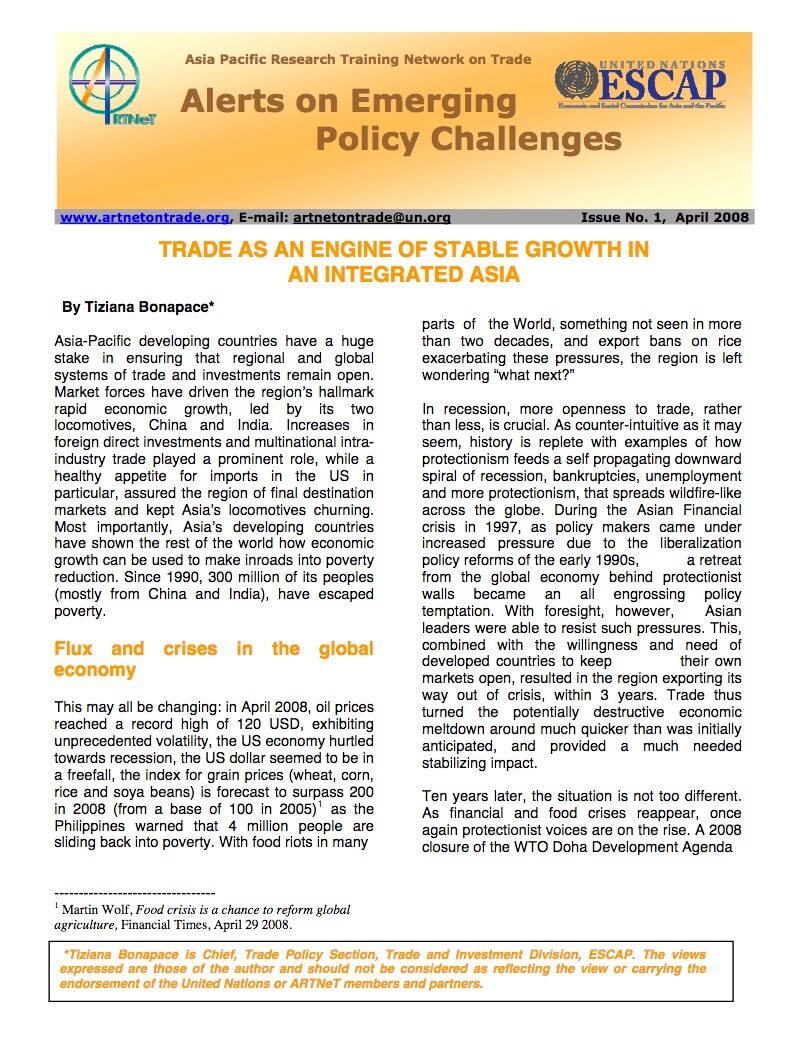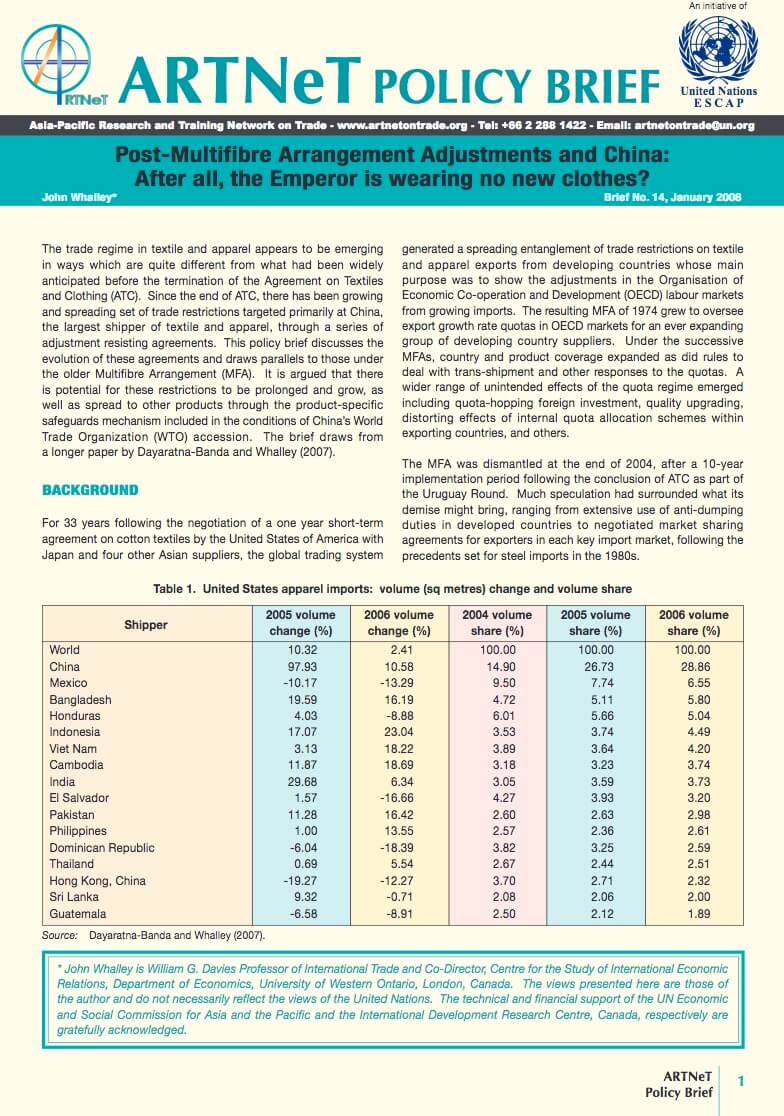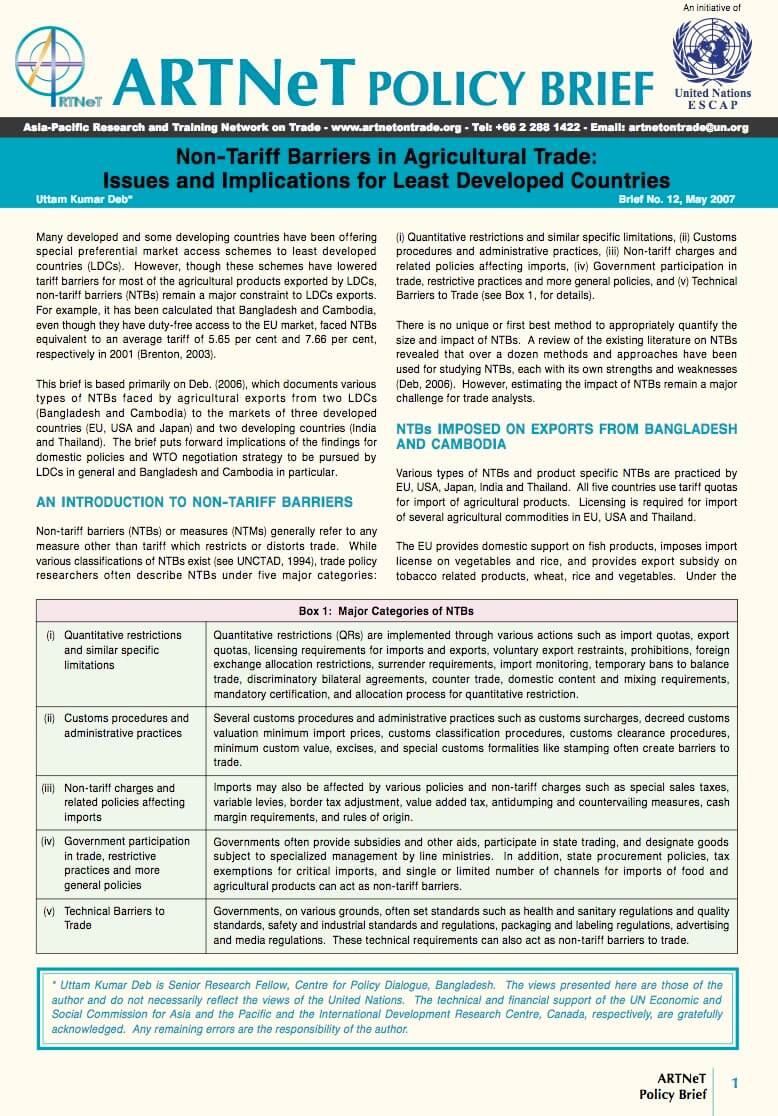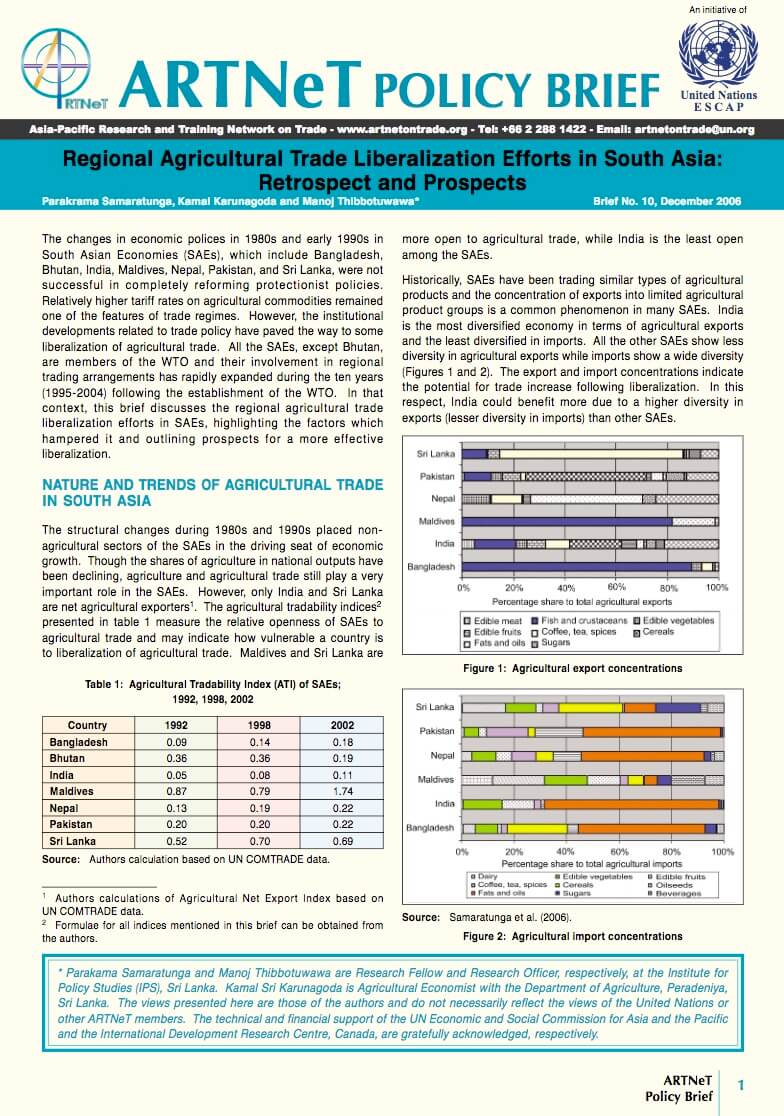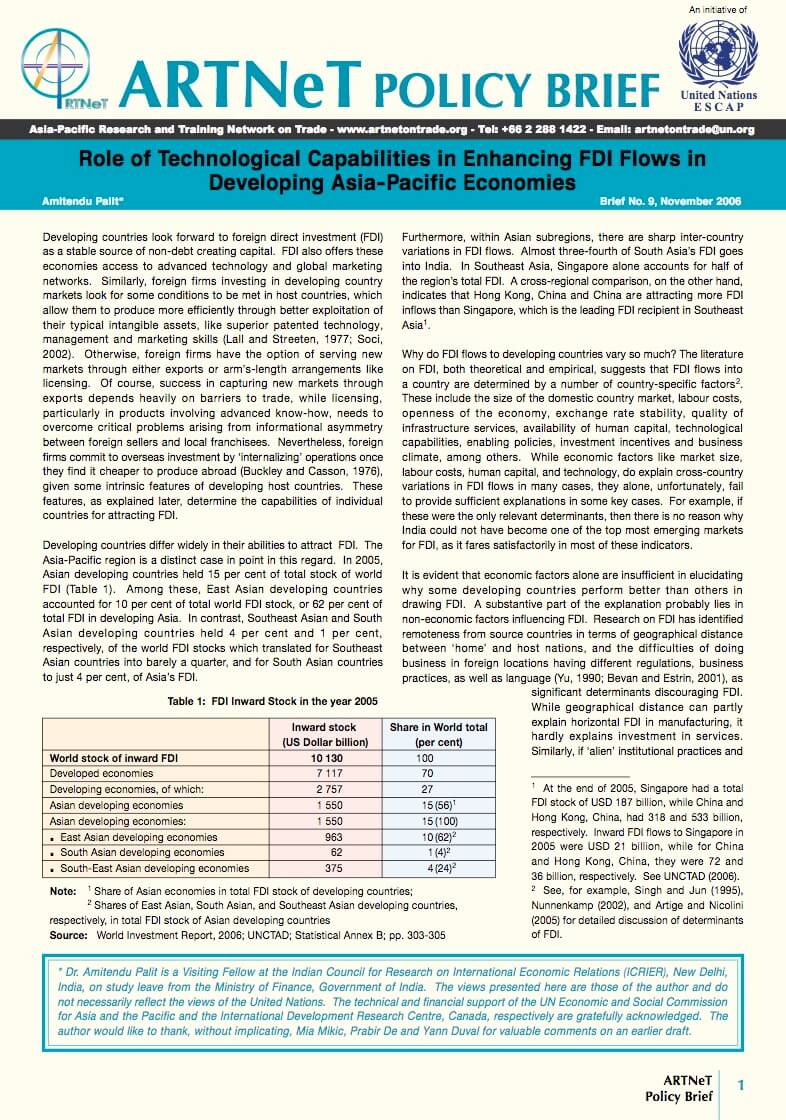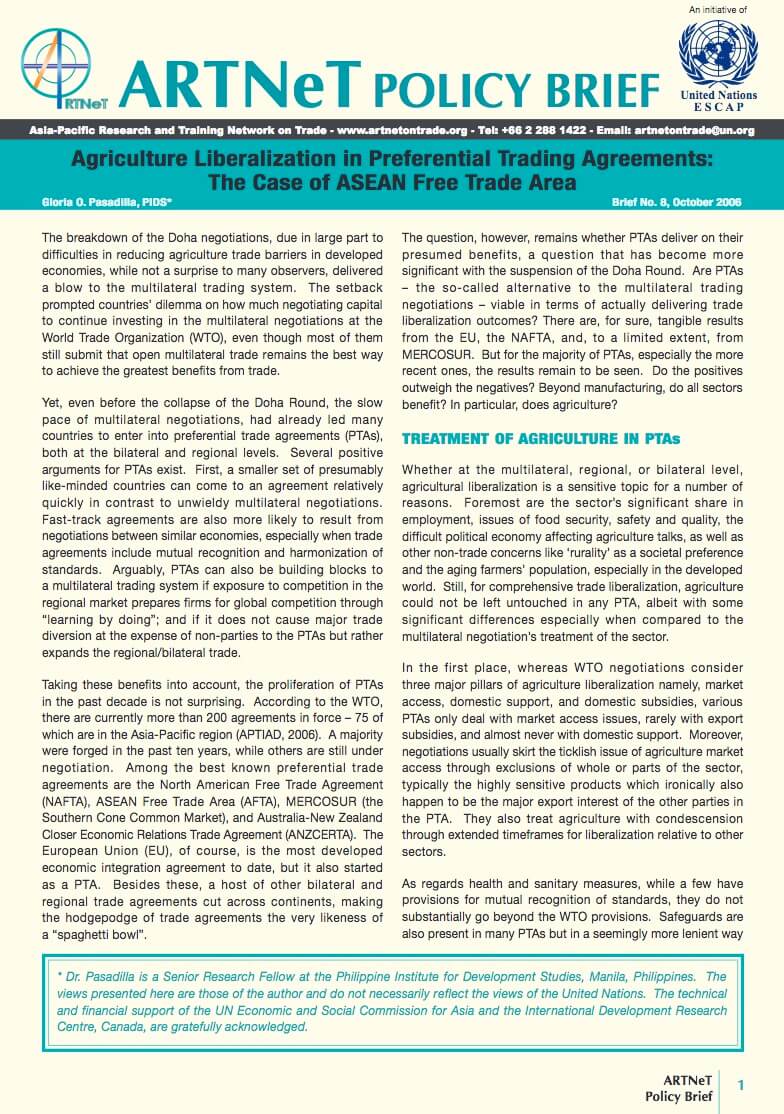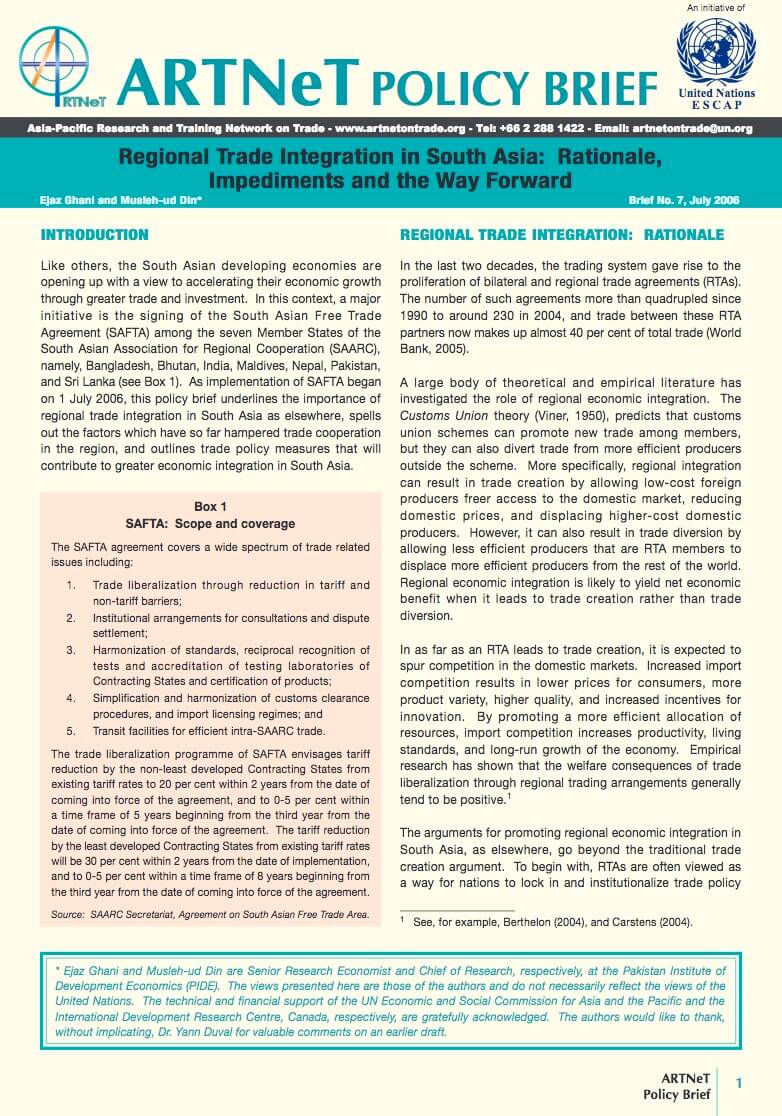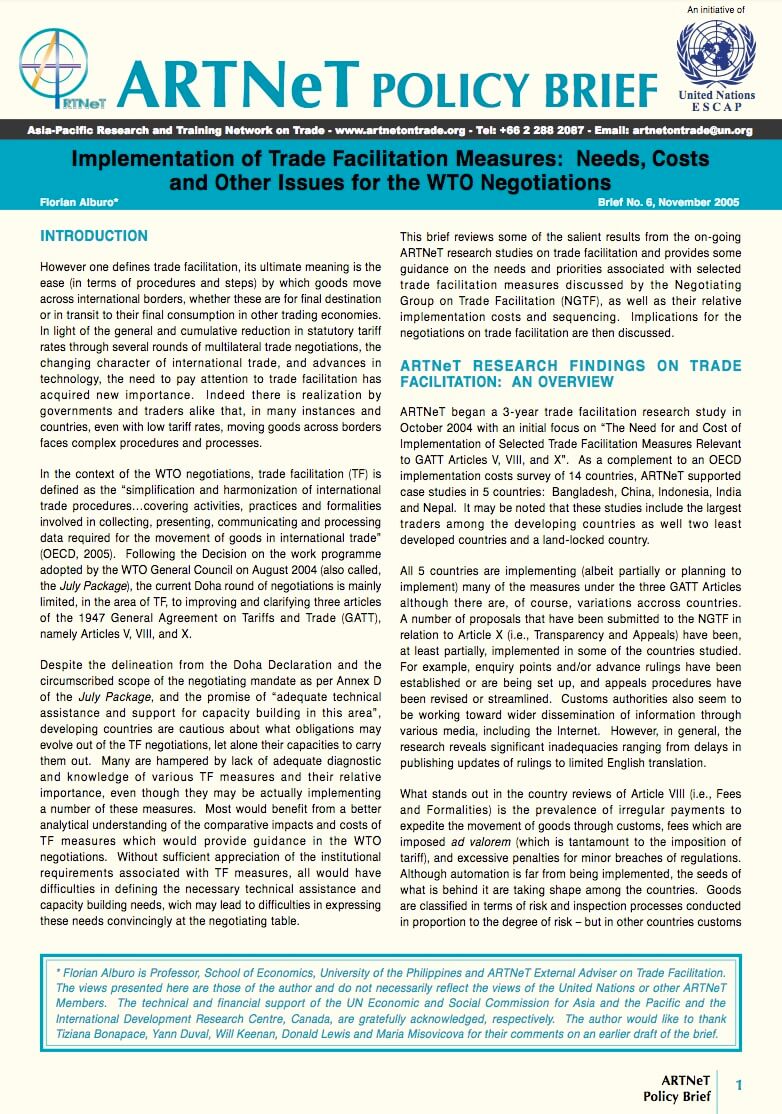ARTNeT Alerts on Trade as an Engine of Stable Growth in an Integrated Asia
Asia-Pacific developing countries have a huge stake in ensuring that regional and global systems of trade and investments remain open. Market forces have driven the region’s hallmark rapid economic growth, led by its two locomotives, China and India. Increases in foreign direct investments and multinational intra- industry trade played a prominent role, while a healthy appetite for imports in the US in particular, assured the region of final destination markets and kept Asia’s locomotives churning.

